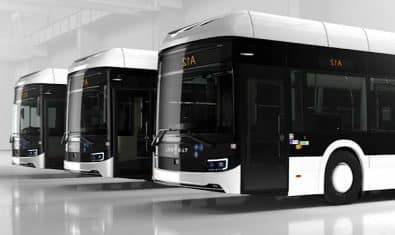There was a time when cars were very straightforward and had regular old brakes. People who used to drive back then were trained to control cars in slippery situations and avoid locking their brakes, which would in turn cause skidding.
But now, with the number of cars increasing on the roads and the hustle and bustle of modern life, there was a need to rethink how brakes work and performed. With a focus on safety and control that is.
This is the reason why Anti-lock Braking System (ABS) was introduced. They became more mainstream after 2012, as more and more car makers incorporated ABS in their models.
If you ever wanted to know how much ABS differ from normal brakes, how it works, its advantages and disadvantages, then you’ve come to the right place.
Brief History of ABS
The ABS was first introduced to the public in the early 1970s. The basic concept has remained the same as ABS has gone continuous development and innovation in the following years.
One of the most prominent advancements has been the introduction of anti-lock braking system’s capability to pulse the brakes when they are applied forcefully. This basically means that your car’s tires don’t get jammed completely and allow you some control over your driving.
These advancements have also given birth to Traction Control System (TCS) and Electronic Stability Contol (ESC), with both of them utilizing ABS equipment for braking purposes.
ABS vs. Non-ABS (Normal Breaks)
The normal brakes have very simple functionality – you simply push the brake pedal so that the brake clamps would hold tightly, slow the car and eventually stop it.
However, that also increases the risk of your car sliding, since the car tires are held in a stationary position while the car has forward momentum.
This problem also will not allow the driver to steer the car and thus the likelihood of driver getting into an accident is multiplied.
In comparison to normal brakes, ABS allow the car tires to move after small intervals even if the brakes are applied completely. Why? So the driver does not lose control of the car completely and road grip is maintained while the car is slowing down simultaneously.
How Does ABS Exactly Work?
To understand exactly how ABS work, here is an example video:
ARVE Error: src mismatch
provider: youtube
url: https://youtu.be/hwwXukJaTlM
src in org: https://www.youtube-nocookie.com/embed/hwwXukJaTlM?feature=oembed&modestbranding=0&showinfo=0&rel=0&autoplay=1
src in mod: https://www.youtube-nocookie.com/embed/hwwXukJaTlM?modestbranding=0&showinfo=0&rel=0&autoplay=1
src gen org: https://www.youtube-nocookie.com/embed/hwwXukJaTlM
Advantages vs. Disadvantages
- Advantages:
- Ability to stop the car on slippery surfaces
- Capacity to steer the car under intense breaking
- Capability to prevent car skidding
- Lesser stopping distance
- Disadvantages:
- Increased expense
- Complication with a car’s electronic system
- Inconsistent stopping distances
Since braking is one of the most important things a driver should practice often, which is why disadvantages of ABS seem minuscule at best. Nothing is worth the price of your safety and well-being so having ABS helps.
It is evident that ABS cars have more potential in terms of avoiding accidents but normal brakes can also yield the same results if drivers don’t panic and apply break pressure after short intervals. It is a matter of preference or personal driving habits. That being said, it is hoped that more and more local car manufacturers incorporate ABS in all their models.































does Abs work on Abdul Wahab?
No for him may be may be an advance technology will work, like the carbon ceramic breaks.
Nothing works on him.
2 Wheel Par to Applicable Nahi Howi Na : Hum 2 Wheel Wale Kiya Kare
normal brakes can also yield the same results if drivers don’t panic and apply break pressure after short intervals
No dear. It’s not possible to have same results. However similar results are possible.
you are scientist.. you can use on 2 wheel also
2 Wheel Par to Applicable Nahi Howi Na : Hum 2 Wheel Wale Kiya Kare
ABS is available on 2 wheels also. You have to have a good bike for that purpose.
Aisay articles k liye pakwheels already available hai……..
Since when did pro Pakistani start spelling the words in American way. British English for Tyres is “Tyres”. American is “tires”.
There are so many other words in different articles spelled wrongly. And by wrongly I mean in American English way.